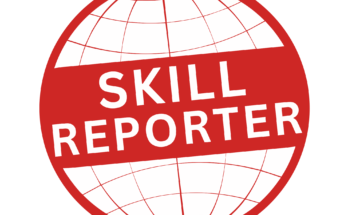Singapore : With jobs becoming obsolete as disruptive technology and other forces impinge on the economy, workers here have been urged to have not one but two deep skills, in case their first skill becomes redundant.
The concept of “second-skilling” was coined and mooted by labour Member of Parliament Patrick Tay about four years ago.
But this could be easier said than done: The Association of Small and Medium Enterprises (ASME) noted that companies here, already struggling with costs amid a lackluster economy, may not have the bandwidth to support training beyond deepening workers’ current skills.
And while second-skilling is a “reasonably sexy” term, it should not be just about developing a second skill for the sake of it, since “that will result in a lot of training hours that may not be necessary at this point in time”, said Mr Gilbert Tan, chief executive officer of the Employment and Employability Institute.
Mr Tan added that workers may need to learn new skills if their current roles are at risk of being disrupted. Or, it could also involve deepening current skill sets, depending on the job requirements, he said.
Mr Tay, who is currently National Trades Union Congress’ (NTUC) assistant secretary-general, stressed the importance of cultivating a second skill as the labour movement seeks to encourage workers to undergo training even before they are laid off from their jobs. He cited the example of a bank relationship manager who is also trained in counseling. He could join the social-service sector if his job is axed because of weak demand in the financial sector.
ASME president Kurt Wee noted that companies that can provide employees with training outside their job scopes are likely to be those which are “not under too much pressure”. He added, Workers should work with companies to explore tapping various schemes, such as the SkillsFuture framework, to broaden their learning.
“We don’t want the SMEs, which are already in a very precarious state … to be short (of) resources even more,” Mr Wee said, stressing that any company-supported training must be done “in conjunction with resource programmes”, including those under the SkillsFuture movement.
Mr Erman Tan, president of the Singapore Human Resources Institute (SHRI), added that it would be “hard to justify” the use of a company’s “limited resources” to enable a worker to learn an additional skill set that may be unrelated to his job.
He said: “Some of these courses use public funding, and government (resources), so it is only fair that these are being properly used to generate towards the restructuring of the economy’s growth.”
And while every “progressive” company wants to be “nimble” enough to invest in conversion training, many companies are too preoccupied with “firefighting on a daily basis” to do so, given Singapore’s tight labour situation, said Mr David Ang, the capability and business development director of Human Capital Singapore, a continuing education and training centre. “The focus is more in terms of getting (workers) to be more productive, learning skills that will enhance their contributions at this moment,” he said.
Employers tend to be keen to send their workers for upgrading only when their companies are restructuring and creating new job scopes, Mr Ang added.
Given such constraints, SHRI’s Mr Tan felt that the onus is on employees to do their own self-directed learning. Initiatives such as SkillsFuture are more than “sufficient” to meet individual needs. With the Internet, people can pick up information quickly and learn, so it’s not necessary that they go for structural training, he added.
Ultimately, for a seismic shift in employees’ attitudes to occur when it comes to acquiring additional skill sets, the biggest push must still come from industry leaders and government agencies, Mr Ang said. He pointed to how the Singapore Workforce Development Agency (WDA) should be developing “training curriculums (and) frameworks” in future skills, while institutes of higher learning, polytechnics and the private sector come on board as training providers.
“So, it’s of a lot of pushing, nudging, driving individuals and companies out of (their) comfort zone to some extent … It’s a two-pronged approach in driving this mindset change and in preparing oneself for the future,” Mr Ang added.
Note: News shared for public awareness with reference from the information provided at online news portals.



